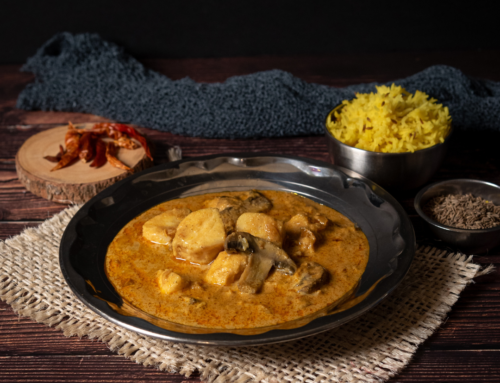Sadly, fresh and local gets a little thin on the ground this time of year.
Luckily, we are saved by imported sunshine in the clever guise of seasonal citrus, most notably oranges. It’s hard to think of these fruits as being seasonal… they’re always in our markets and grocery stores. And while it’s true that some citrus trees bear fruit throughout the year, winter is when we see an influx from Arizona, California, Texas and Florida.
A kitchen without a lemon is tantamount to a kitchen without an onion, so essential is that bright, acidic element to almost any preparation, sweet or savoury. Recent years have brought us Meyer lemons, a delightful addition to the citrus pantheon. It hails from China and was brought to the U.S. in 1908 by Frank Meyer where it was primarily grown as a backyard ornamental. Smooth, thin-skinned and often golden in colour, this juicy lemon is quite sweet (for a lemon), with a distinctive floral note that lends itself to marmalades and specialty cocktails. Of course, a Meyer lemon can be used in place of the common variety in any recipe.
Tip: As with any citrus, use fresh juice; the bottled product pales in comparison. If you have a glut, you can freeze the juice without much loss of flavour, but lemon juice rapidly loses its vitamin C immediately upon being squeezed.
The popularity of easy-to-peel mandarins has made these mostly-seedless sweet oranges much more common today than in the past. Remember how we used to wait impatiently for that first box of “Japanese” oranges to appear? Around the holidays and into the new year, we see clementines, satsumas and tangerines in grocery stores, Italian markets and specialty stores. These are often graced with stems and leaves, creating a lovely display.
For the serious marmalade makers, Seville oranges should be appearing in late January, early February. These sour oranges can’t be eaten out of hand, but, marmalade aside, they make a considerable contribution to the kitchen.
Tip: I buy more than I need for the annual marmalade extravaganza, then freeze the juice and dry the zest (removed with a vegetable peeler) to use in osso buco, tagine-style stews and sauces for grilled duck breast or roast chicken.
Blood oranges, previously grown primarily around the Mediterranean, are now coming to us from California. However, some Italian markets still bring in moro blood oranges directly from Italy, sometimes individually wrapped in colourful paper. Blood oranges can be substituted for any other orange. Some have described the flavour as a happy collaboration between an orange and a raspberry.
Tip: Curd and hollandaise sauce, to name just two preparations, can be endlessly re-imagined using a different citrus fruit.
A chance meeting with friend and culinarian Grayson Sherman, resulted in this tasty cocktail recipe… he calls it a Venetian Sunset: Combine 2 oz of a reliable London gin, 2 oz Campari, 1 oz Solerno liqueur (use Cointreau if you can’t find Solerno), a dash of orange bitters, 2 oz freshly squeezed blood orange juice, a little lemon juice if you’re using Cointreau, and 2 oz San Pelligrino blood orange soda. Over ice, combine everything in a large old-fashioned glass, top with soda and garnish with a slice of orange and a sprig of mint or basil.
The Cara Cara, with attractive pink flesh and a subtle berry-like flavour, is a newcomer on the citrus scene.
The following simple, multi- coloured orange salad is guaranteed to perk up any winter dinner table. Choose two Cara Cara oranges, two regular navel oranges and two blood oranges, all about the same size. Using a very sharp knife, cut off the blossom and stem ends. With a flat side of the orange down, cut from top to bottom in a curving motion to remove the peel and white pith, retaining as much of the flesh as possible. Squeeze the peel with the residual flesh into a small bowl for the dressing. Slice the peeled oranges into ¼ inch rounds. Do this on a plate to save the juice, again for the dressing. Arrange the slices on a platter with sliced rounds of red onion, mint leaves and pomegranate seeds. Add the juice of a lime to the reserved orange juice, add a pinch of Maldon salt and drizzle over the slices. Finish with a very good fruity olive oil. Sliced fennel and/or avocado slices are also nice additions and make for a heartier dish.
Tip: Put the onion slices in ice water in the refrigerator for an hour or so before patting dry and garnishing the salad. They will be cool and crunchy, and much milder tasting.
Of course, there are limes and grapefruits in abundance and any treatise on citrus wouldn’t be complete without a mention of kumquats. These cute little ovals are unusual in that the juice is very sour and the peel is delicate and sweet. They are often full of seeds, but, for a fun treat, cut them in half, squeeze out the juice and seeds between two fingers, and just pop them in your mouth. Don’t forget to use the juice in your next vinaigrette.
Tip: For juicier fruit, choose citrus that is heavy in the hand with relatively smooth skin.









Valerie, Owner of Backyard Bounty, makes 20!!!!..yes..20 different Marmalades, by hand, and sells them Hillhurst Sunnyside Farmers Market every Saturday 12pm to 4pm.
She also makes over 80 varities of jams and jellies salsa and chutnies.
All made with low sugar…(organic cane sugar)
Her Seville Marmalade is the best i have ever tasted.
We see some essentials in kitchens all the time – items that we perhaps take for granted. However, these items, such as lemon, do end up completing the kitchen.
Great Article. Thanks for sharing with us.